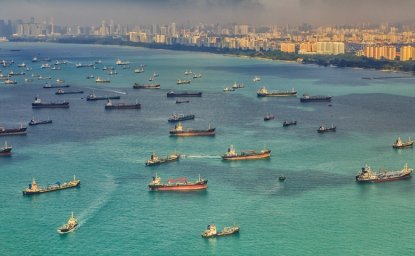The Trans-Pacific Partnership (TPP) does not include binding disciplines against unfair currency practices. Other countries would not sign on to an agreement that includes sanctions against such practices. Instead, TPP countries have issued a “Joint Declaration of the Macroeconomic Policy Authorities of TPP Countries”—a “side agreement” to the TPP—stating that they wish to promote “market-determined and transparent exchange rate regimes that allow real exchange rates to adjust to reflect underlying economic fundamentals.” Each country states that it will refrain from competitive devaluation of its currency.
All the TPP countries are members of the International Monetary Fund (IMF), which already includes specific prohibitions against currency manipulation in its Articles of Agreement, the international treaty that created the IMF. How will the TPP’s Joint Declaration add to the voice of the IMF in discouraging competitive currency devaluation?
The TPP declaration goes further than the IMF Articles in terms of increasing the transparency of government activities related to exchange rates. TPP countries will commit to release publicly monthly reports on their foreign exchange reserves and quarterly reports on their intervention in currency markets (with some exceptions for Brunei, Malaysia, Singapore, and Vietnam). The foreign exchange reserves will reflect a government’s or central bank’s intervention in foreign exchange markets as it buys or sells foreign currencies against the domestic currency in an effort to influence the market price. Official purchases of foreign currencies and sales of domestic currency are the most direct indications of a government trying to push down the value of its currency to increase the competitiveness of exports of goods and services. TPP members will be watching each other closely to see if a country’s intervention is increasing official foreign exchange reserves significantly above what it may need for its normal trade and investment activities.
Official purchases of foreign currencies and sales of domestic currency are the most direct indications of a government trying to push down the value of its currency to increase the competitiveness of exports of goods and services.
Although this level of reporting may appear to be a technical issue, such transparency makes it readily apparent when a country is directly trying to influence market prices. And this transparency will enable partner countries to point to such activity and ask specific questions as to why a country is intervening. Ministers and central bankers, when they see such behavior, can confront each other and point to the pressures that they face to follow suit and negate the competitive advantage of the initial intervention. The Joint Declaration indicates that TPP members (the macroeconomic “Authorities”) will release reports after their meetings that include their collective conclusions. Yet the declaration does not specify how TPP members will arrive at their collective conclusions, what inputs they will use, how often they will meet (other than at least annually), or which country will organize and chair the meeting.
These Authorities will be considering a number of important issues as they organize their procedures and follow up to any conclusions they might reach. Some of the issues include:
- What is the role of the IMF, which already prepares annual detailed exchange rate assessments for a number of the TPP countries? The Joint Declaration states that the IMF “may” be invited to prepare input to the group. Does this mean that the IMF will most likely be called on to provide more frequent updates of its exchange rate assessments? IMF assessments may be viewed as more objective than those prepared by any one country.
- What standards will the macroeconomic authorities demand from a country seeking to join the TPP? The high standard for reporting foreign currency intervention and levels of foreign exchange reserves is a major achievement. South Korea and China do not now meet those reporting standards. If these two countries seek to join the TPP, will the original TPP members insist that they meet the higher standard of reporting foreign exchange market activity?
- How detailed will the macroeconomic authorities’ meeting report be? Currently, IMF input into G-20 meetings is routinely made public. Will the IMF or other inputs into the periodic meetings also be made public? How often will those meetings occur? Will a single TPP member be able to convene an interim meeting to raise concerns before problems escalate into countries’ countering with increased intervention of their own? How will the frequency of such meetings be determined?
In conclusion, the TPP Joint Declaration sets the principle of cooperation and consultation as a means to address emerging distortions before problems escalate. Once the TPP comes into effect, it will be up to the participating countries’ treasury, finance ministry, and central bank officials to develop this agreement into an effective complement to the partnership.
The opinions expressed here are solely those of the author.




